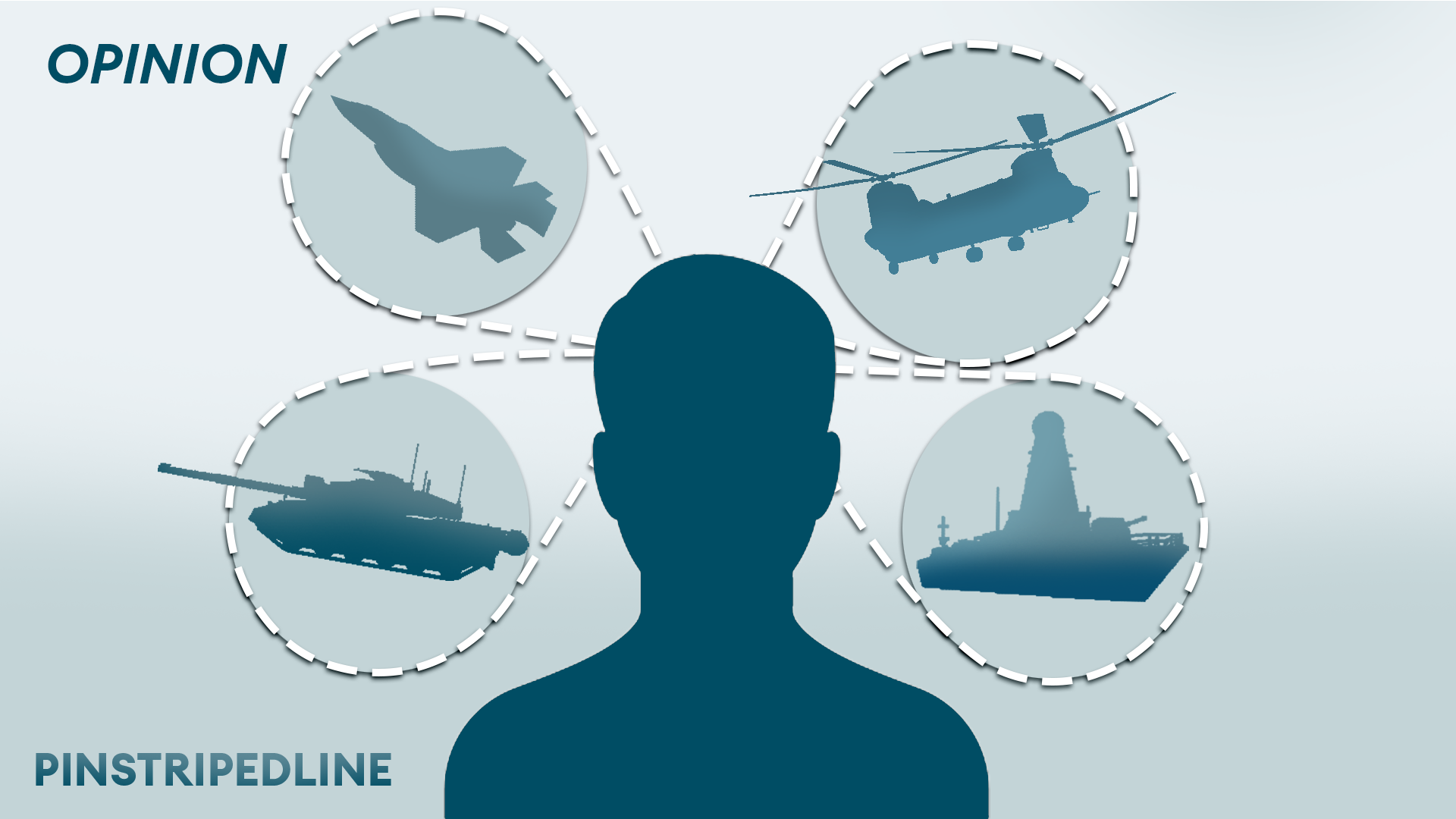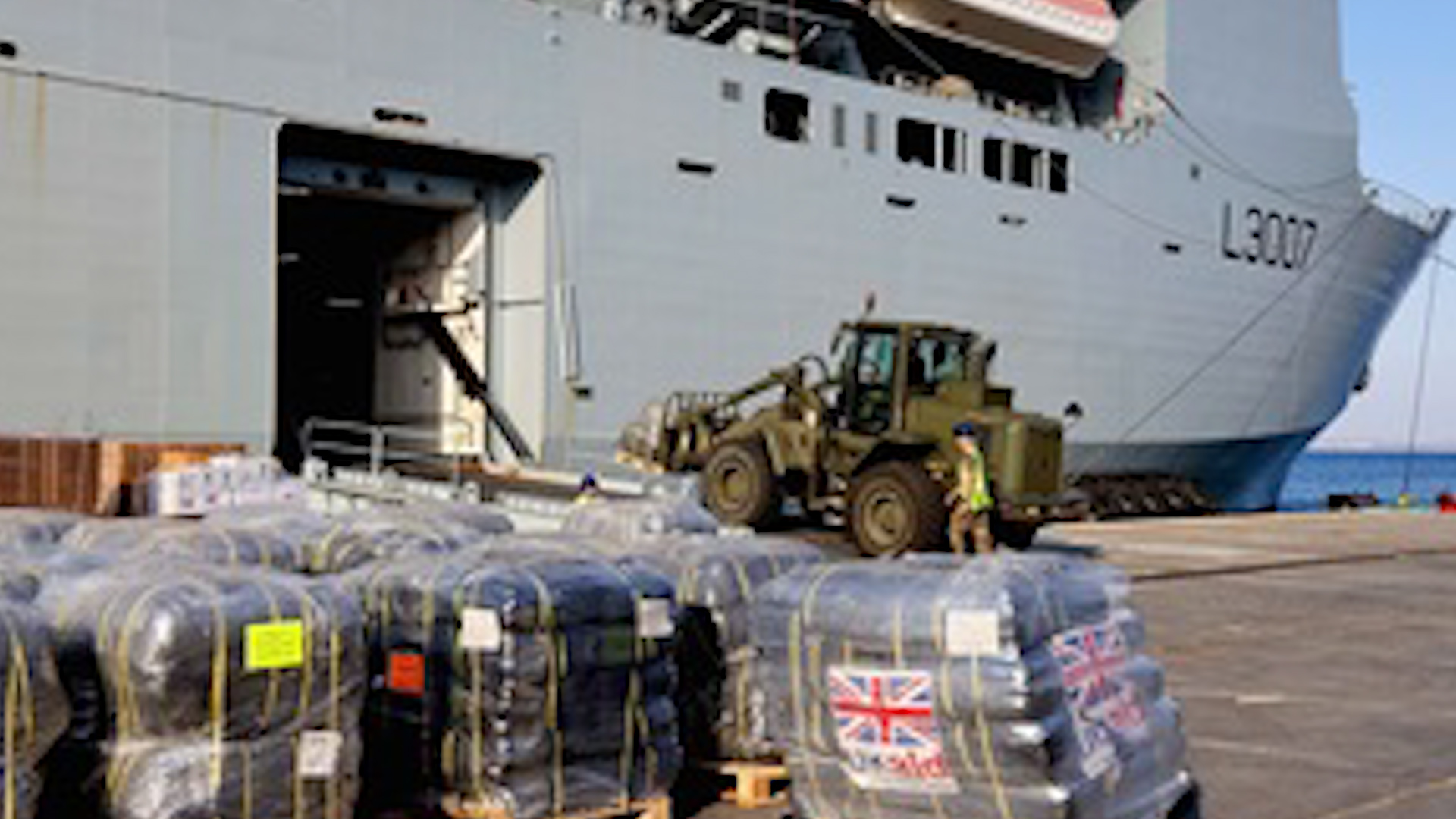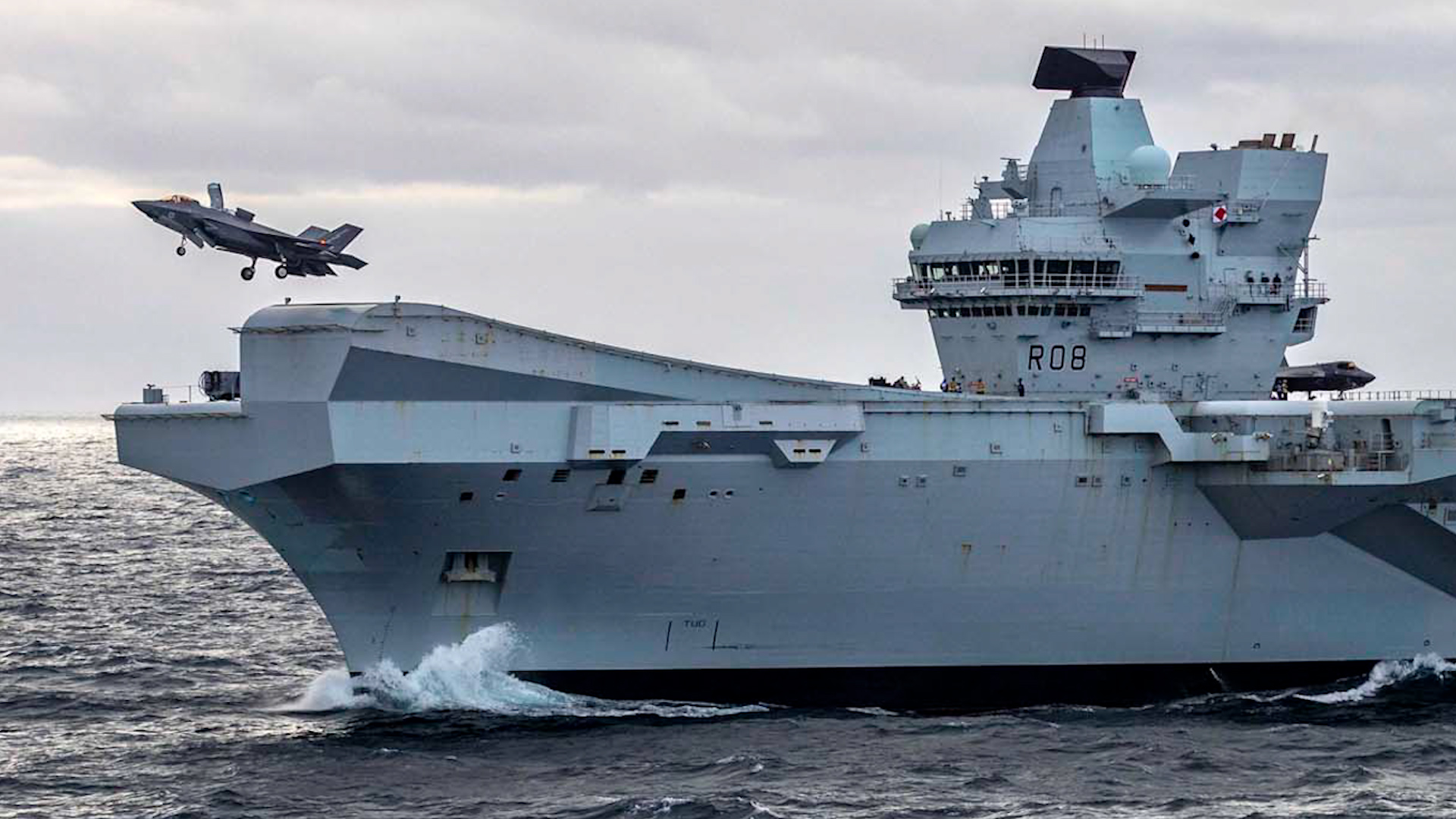
The RFA: The civilian support fleet without which the Royal Navy would be sunk

Any reduction in the RFA would cripple the Royal Navy's global defence capability, argues defence and security blogger @PinstripedLine.
Most members of the public are probably unaware that one of the most critical parts of UK defence is a small organisation of civil servant merchant mariners operating a fleet of 13 ships, supporting the Royal Navy, Nato and other allies on operations across the globe.
The Royal Fleet Auxiliary (RFA) may be a little-known organisation, but it's vital to much of what the Armed Forces deliver.
It is also an organisation struggling to retain staff and, in turn, keep its ships at sea, while a series of strikes as part of a long-running dispute over pay continue to cause challenges.
Why though is the RFA so vital to UK defence – and why is there growing concern about this situation?
Auxiliary ships are extremely valuable tools of naval power, not just for the UK but also for our allies.
Traditionally the Royal Navy has prided itself on being a "blue water navy" in that it possesses the full range of support and supply ships needed to send a task group abroad, carry out operations ranging from exercising with allies to warfighting, and stay out at sea fully fuelled and supplied anywhere in the world.
There are very few truly blue water navies out there, with arguably only the US, the UK and France falling into this category, with the Chinese and Indian navies having highly capable forces, but currently with a narrower focus on regional operations in the Indo-Pacific region.
The RFA provides vessels for supporting the Royal Navy at sea.
Historically, it has operated a diverse fleet of fuel tankers, stores ships, amphibious assault vessels, fleet repair and aviation training ships.

These vessels are not classed as warships – hence have the prefix RFA rather than HMS – and are crewed by civilians.
Despite this they have sailed in close support of every major Royal Navy operation, keeping the fleet fuelled, supplied with food and bombs, and supported for decades.
Their finest hour was arguably the 1982 Falklands War, when the Task Force sent to recapture the islands could not have succeeded without their support.
Today the RFA has, at least on paper, six tankers to enable warships to stay fuelled at sea for longer periods of time, and a single stores ship, RFA Fort Victoria, to carry fresh food and munitions to support task group operations such as the Carrier Strike Group.
There are three Bay-class Landing Ship Docks which have in recent years supported amphibious operations, as well as delivered humanitarian aid and disaster relief in the West Indies.
Most recently a Bay operated off Gaza providing support to operations in the region.

RFA Argus provides both a "mini aircraft carrier" deck to support helicopter training, and acts as the UK's seagoing hospital ship.
Meanwhile, the newly acquired RFA Stirling Castle specialises in support to autonomous mine warfare vessels, and RFA Proteus supports operations to protect deep-sea cables.
Collectively, this fleet provides a vital series of services that help enhance the effectiveness of the Royal Navy.
These ships matter to the UK as a vital tool to support operations in several different areas.
At home, tankers are used to keep Royal Navy ships on patrol in the North Atlantic, helping enable escort ships to stay at sea longer tracking Russian ships and submarines.
They can be used to support Nato operations, and with a significant shortfall of tankers and other auxiliaries across Nato, being able to contribute one to a multinational operation is often more valuable than offering an additional escort.
By providing the supply ship, you gain influence as other nations will rely on you to stay at sea.
The RFA also enables the Royal Navy to deploy globally – for example in 2021 the Op Fortis deployment, sending HMS Queen Elizabeth and the Carrier Strike Group to the Indo-Pacific could not have occurred without the support of the RFA ships that participated to ensure ships remained fuelled, stored and ready for operations.

A shrinking service
More widely, the RFA provides support that allies benefit from. For example, for many years a Bay class was based in Bahrain to support mine countermeasures operations for the UK, US and allied navies.
This was a vital mothership function that ensured crews could stay at sea for longer, and use the ship for "hotel services" support, enhancing their reach and time at sea.
This service was reportedly highly valued by the US Navy as a means of increasing its own mine warfare capability.
It is clear that the RFA is one of the most important assets in defence, but it is also experiencing significant personnel challenges.
The force has shrunk from roughly 2,500 people in 2010 to just 1,600 today – that's nearly 40% smaller.
This has made it harder to get ships to sea, as the RFA cannot generate enough crews to operate the ships it has.
Currently, of the seven tankers and stores ships it has on paper, no more than two tankers are believed to be currently active, with the rest laid up in long-term reserve or refit.
Some public estimates suggest that of the 13 ships in the fleet, the RFA is struggling to find enough people to keep just six seagoing at any time.
A key reason for the loss of crew is, reportedly, due to an ongoing pay dispute.
The RFA is covered by the wider MOD Civil Service pay award, which averaged out at about a 5% increase in 2024.
The unions claim that RFA pay has been cut by 30% since 2010 in real terms, while there are an increasing number of opportunities in the wider UK marine sector that pay better money for a more stable lifestyle.
From frustration to resignation
Reports speak of growing frustration by RFA personnel that they feel they are being used as substitutes for Royal Navy ships on operations while being given a substantially less attractive compensation package.
This growing frustration has led to increased year-on-year resignations, while the recruiting system has, according to official figures, provided enough replacements.
This situation is made more complex as the RFA is the single largest employer of merchant mariners in the UK, meaning that there is a relatively small pool of qualified people to recruit from, who are keenly sought by other shipping companies.
The impact of these crew shortages will be significant in the short to medium term.
The reduced number of seagoing tankers means there is far less routine RASing (replenishment at sea) going on.
This used to be a routine experience, but now may be far rarer for junior sailors and officers under training – in turn reducing the corporate knowledge and experience of how to do this sort of activity as routine business.
The lack of a seagoing stores ship means that there is no way for the Royal Navy to practise the transfer of solid stores, such as food and bombs, in home waters without foreign help.
Given how complex and risky these evolutions are, they need to be practised regularly to ensure they can be done safely in any condition.
In the medium term the shortfall of people will affect the UK's ability to support wider Nato operations, for example, not being able to contribute tankers to task groups.
The necessity of Norway
The 2025 Carrier Strike Group deployment out to the Indo-Pacific will be wholly reliant on a Norwegian store ship, the Maud, for solid stores, since RFA Fort Victoria is unable to get to sea.
This means for the first time ever a Royal Navy carrier group will globally deploy without its own national store ship to support it.
While the Maud's presence is testament to the exceptionally close defence relationship between the UK and Norway, it also highlights that the Royal Navy is now utterly reliant in the short term for foreign navies to support its carrier deployments.
Simply put, until RFA Fort Victoria can go to sea again, the Royal Navy cannot deploy a Carrier Strike Group globally without a foreign navy's assistance.
This is the first time in the history of the RN that this situation has occurred.
What does the future look like then for the RFA?
In terms of capabilities, the RFA has an incredibly bright future ahead of it, with the arrival of RFA Stirling Castle and Proteus showing that there are a range of new missions where the RFA will lead in delivering critical support to national security.
Meanwhile, work is underway on three new Fleet Solid Support Ships to replace the Fort Victoria, which at 40,000 tonnes and over 200m long and with a Chinook-capable flight deck, these will be some of the biggest ships ever operated by the RFA.
Scheduled to enter service in the next few years, they will revolutionise how the Royal Navy is supported at sea, and significantly increase overall capability.
Looking slightly further ahead, the Multi-Role Support Ship (MRSS) project, which is scheduled to deliver three to six new hulls to replace Argus, the Bay class and the Royal Navy Albion class will also significantly increase the capability of the RFA fleet.
There is a very positive long-term future in terms of shipping, but it relies on the RFA recruiting and retaining the people it needs now, in a very challenging labour market.
Solving the pay dispute, though, will be a challenge.









